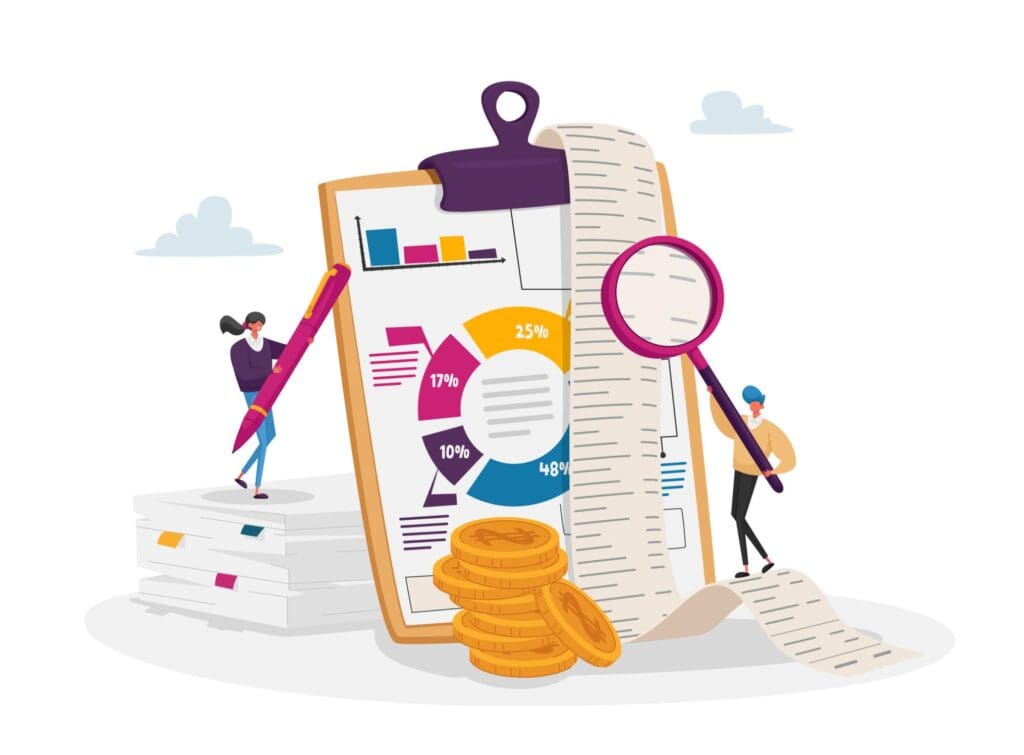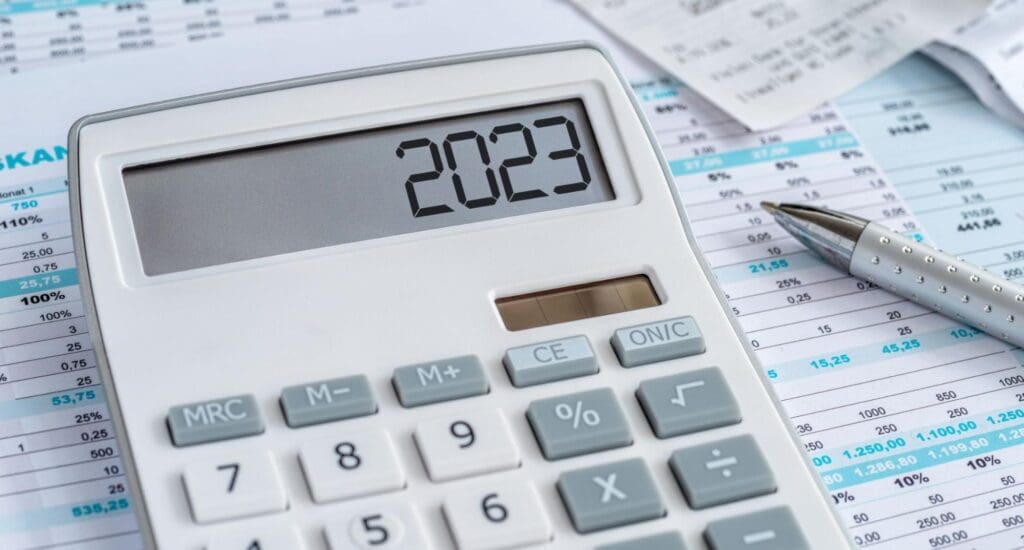IRS. IRC. AGI. EIN. NOL. CGT. These are just a few of the acronyms used in the tax world. No wonder understanding how to file taxes is so confusing for many individuals.
Here’s another “taxcronym” for you: R&D. It stands for Research & Development, a type of tax credit available to eligible businesses of all sizes. Not only is it available at the federal level, but it’s also obtainable in more than 30 states.
The purpose of the R&D tax credit, which was enacted in 1981 as a temporary tax incentive and permanently extended in 2015, is to encourage businesses to invest in research and innovation in the United States. It’s a dollar-for-dollar tax credit that enables businesses to deduct the cost of qualified research and innovation from their taxable income. According to the IRS, the R&D credit is equal to the sum of 20 percent of the excess (if any) of a company’s qualified research expenses (QREs) for the taxable year over the base amount.
Categories of Qualified Research Expenses (QREs)
QREs are best described as the costs businesses are allowed by the IRS to include in their calculation for the R&D credit. They’re one of two primary categories of qualified expenses, the other being basic research payments (BRPs). The majority of businesses eligible for the R&D tax credit claim expenses under the QRE category.

Three main categories comprise QREs: wages, supplies and contract research. To qualify for the R&D credit, businesses are required to submit adequate documentation that supports their claim.
Wages
Amounts paid or incurred for wages are, for the R&D tax credit, those reported on Form W-2 along with pass-through income subject to self-employment tax. These wages do include bonuses and stock option redemptions, but they don’t consist of amounts subject to withholding (i.e., not-taxed income). For most businesses, wages are the biggest expense for their R&D projects
Under the R&D tax credit, wages consist of those paid to employees who perform qualified services, such as:
- Engaging in qualified research
- Directly supervising qualified research
- Directly supporting qualified research
According to IRS guidelines, if 80 percent or more of an employee’s time is considered qualified, 100 percent of their wages can be utilized to calculate the R&D credit. However, if fewer than 80 percent of a qualified employee’s hours are spent on qualified services, businesses can only claim the actual number of hours spent on those services.
Supplies
To help define supplies as part of the R&D credit, we again look to the IRS. The tax agency describes supplies as any tangible property other than land or improvements to land and property of a character subject to the allowance for depreciation. This means only expenses for supplies used in the conduct of qualified research are included.
Examples of such qualified supplies include:
- Materials used to develop and test prototypes, first article runs and pilot models
- Miscellaneous component parts
- Small- or large-scale test batches
- Custom and unique equipment or tooling
- Mold costs
- Materials used or scrapped during process development
Unlike wages, supplies should only constitute a small amount of your overall QREs. It’s also helpful for businesses attempting to claim the R&D tax credit to understand what types of non-tangible expenses are excluded as qualified expenses, such as:
- Rental and leasing fees
- Travel, meals or entertainment
- Communication costs
- Professional dues
- Licensing fees
- Relocation costs
- Depreciable equipment
Contract Research
Section 41(b)(3) of the Internal Revenue Code defines contract research expenses as 65 percent of any amount paid or incurred by the taxpayer to any person (other than an employee of the taxpayer) for qualified research. For the R&D tax credit, it refers to third-party consultants and/or subcontractors who are assisting the business in qualified research while that taxpaying company bears the economic risk during the QR activities.
That 65 percent in expenses increases to 75 percent if the third party used for the contract research is classified as a qualified research continuum. The IRS also notes that, if any contract research expenses incurred during any taxable year are attributable to qualified research to be conducted after the close of such taxable year, that amount should be treated as paid or incurred during the period during which that research is conducted.
As with supplies, there are some exceptions to contract research expenses allowed for the R&D tax credit, including:
- Research conducted after commercial production has started
- Research used to adapt an existing product or process to an individual customer’s need
- Duplication of an existing product or process
- Market research (i.e., surveys, studies)
- Routine data collection
- Routine quality control testing and/or inspection
- Research conducted outside of the United States
- Research funded by another person, grant, government or organization
- Research in the social sciences, humanities or arts
- Research for internal-use software
How to Document Qualified Research Expenses
Although R&D tax credit rules have always included some requirements for documentation, new rules enacted in 2022 have changed some of them. Companies now have to amortize their R&D expenditures and software development costs. But, they still have to provide sufficient documentation to support the amount of QREs they claim.
The IRS refers to “items of information” companies claiming the R&D credit must provide when they file it. They must meet the specificity requirement of Regs. Sec. 301.6402-2(b)(1) by:
- Identifying all the business components to which the Section 41 research credit claim relates for that year.
- For each business component, identifying all research activities performed and naming the individuals who performed each research activity as well as the information each individual sought to discover.
- Providing the total qualified employee wage expenses, total qualified supply expenses and total qualified contract research expenses for the claim year. This may be done using Form 6765: Credit for Increasing Research Activities.
It’s recommended that businesses claiming the R&D tax credit keep track of all of their research expenses, from payroll records and vendor invoices to copies of contracts paid to third-party contractors, documents demonstrating the research process and progress and project lists and notes. Other examples of such documentation consist of:
- General ledger reports indicating which business expenses and supplies were related to research and development activity
- Timekeeping records for work plans, payroll, meetings and any other activities for R&D
- Design drawings, test records, blueprints and any other documentation verifying the process and impact of the company’s R&D
Businesses submitting a claim for the R&D tax credit must show evidence that payment was not contingent on the results or outcomes of activities performed. They also are required to verify that substantial rights to the research and results have been retained.

Methods for Calculating Qualified Research Expenses
When filing to claim the R&D tax credit, businesses should keep in mind the two standard calculation methods. The first, the Regular Research Credit (RRC), equals 20 percent of a company’s base amount for the current tax year. The RRC is better for businesses with a low base amount, including startups.
The second method, the alternative simplified credit (ASC), is equal to 14 percent of a business’s QREs above a base amount, which is equal to half of the company’s average QREs in the three previous tax years. The ASC method is better for companies with higher base amounts or that have complications with mergers and acquisitions.
Businesses can decide between the RRC and ASC methods when filing in the current tax year. Once again, they should be sure to submit the correct documentation to get their R&D credit.
At StenTam, we collaborate with business owners like you to leverage the benefits of government programs like the R&D tax credit. Our team of experts utilize proprietary technology to deliver services that are second to none – all while fully maximizing your filings. If you’re interested in learning about your eligible tax credits, contact us today!



